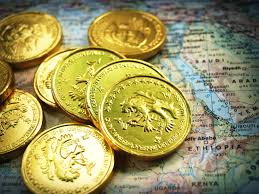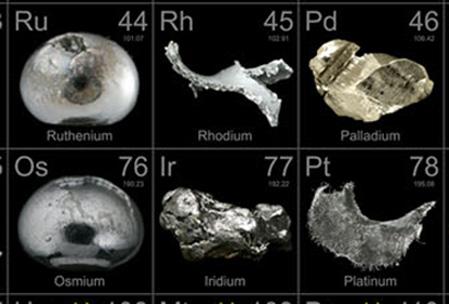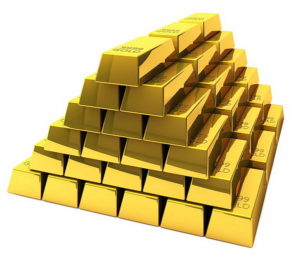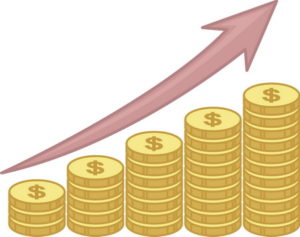Ah gold, the metal we humans have been fascinated with since the 5th millennium BC, when the metallurgy era had begun. From a scientific standpoint, this precious metal is an element just like hundreds of other naturally occurring substances. However, from the lens of history, gold has been a symbol of prosperity and wealth and it is still considered a valuable asset today, which is traded daily on the gold market. As of the writing of this article, the price of one ounce of gold is $1,317.00 and there is no doubt that this alloy will remain a precious one for centuries to come.
A Bit of Gold History
One historic example of the interest in gold unfolded was with the Thracians, an Indo-European tribe that inhabited a large part of Europe and began preserving this metal as a commodity.
Egyptians were the first ones who started refining gold ores and used its bars in trade exchanges. In 600 BC, the Lydia Kingdom introduced gold mints as a currency. From then on, gold became a leading option to store value, worth and to make investments.
And to this day, gold is still considered a viable investment option. In this article, we will discuss the reasons why the value of gold as an investment and money has transcended many eras and civilizations.
The Status of Gold as the Oldest Currency
As mentioned earlier, no currency from modern times can predate the status of gold as money. It has been used for over 2,500 years. The second oldest currency in the world is Pound Sterling that was introduced 1,300 years after gold had established its place as a currency.
Gold is not just the oldest currency. It is also a commodity that preserves its value. From the beginning of the 20th century, all major currencies of the world depreciate in comparison to the value of precious metals.
Yes, the price of gold fluctuates like any other commodity. However, its value remains constant over a long period of time. Waves of inflation affect the purchasing power of traditional currencies, but gold remains unaffected to such economic woes.
The Tangible Nature of Gold
Investments can either be tangible or intangible, and gold belongs to the former group. In today’s world, most of our investments are intangible. Whether it’s stocks or cryptocurrency, everything exists in an intangible form or in a cloud and thus has a volatile nature. As soon as a company declares bankruptcy, its stocks vanish into thin air. On the other hand, the majority of tangible assets are subjected to physical depreciation. A stash of corn won’t be same after, say, six months. Similarly, conserved oil depletes when it is not properly covered.
In comparison, gold is a tangible asset that can withstand all natural wear and tear. Whether its heat or water, nothing can physically wear out a gold specimen. Moreover, it can’t be hacked or tempered like digital assets. This is the reason why even after all technological progressions, many people still opt for gold bars and bullions as the viable choice of investment.
No High Financial Risks are Attached with Gold
Any investment comes with a long list of terms and conditions that also entail different risks and liabilities associated with the given plan. Then, there are intermediaries like brokers and liaisons who are also involved throughout the process and also share the profit.
By investing in gold, one can leave out all these obstacles. It is an investment in itself and requires no terms and conditions. Its value is real and hence never falls to naught. If you have gold assets, you can use it to balance the fluctuations of stocks when the market gets volatile. Rest assured as they will hold their value and can increase in value, depending on market conditions.
There is Always a Gold Rush
The quality and viability of any investment can be gauged through its liquidation value. Every tangible or intangible commodity has a liquidity value, and gold is no different. However, there is no comparison to the liquidity power of gold. If you want to liquidate gold in any part of the world, you can find many keen buyers at any given time. Such a quick transaction is not possible with any other investment plan, no matter how lucrative and sought-after it is.
Easy Storage and Upkeep
The question of storage and upkeep arises naturally with the majority of tangible investments. For example, crop investments will need a warehouse and active surveillance. Similarly, investing in a real estate property also entail large recurrent maintenance expenses.
Gold is also a tangible asset and a precious one. So, you will have to take care of its safe storage, which can be easily arranged through safe deposit boxes or other secure facility or through the use of precious metals companies that will hold your gold for you in certificate form. Regarding the maintenance of gold, you don’t have to do a thing since it can self-preserve its shape and quality for thousands of years.
No Specialized Knowledge is Required for Gold Investing
Every investment, no matter how simple and uncomplicated it is, requires some prior knowledge of how it works. Investing in stock options, for instance, entail some good knowledge of how stock markets operate and how one can forecast bullish and bearish trends. Likewise, real estate investments require a hectic comparative analysis of different zones and sectors.
Although it is recommended to research the history and performance of this commodity, you don’t need to be an expert in precious metals to understand its market trends. All it takes is a little homework and money (of course) to buy gold bullion. Once you have a good understanding of this metal’s value, you can speak to an expert who will guide you from there, and there are thousands to choose form. Just Google ‘Buy Gold’ or an equivalent search term for purchasing this commodity and scores of reputable precious metals websites will show up. With the availability of so many universally certified and accredited gold dealers, you don’t have to worry about the authenticity of any given specimen.
Gold is an Active Investment
Many people think of gold investing as a defensive strategy to protect their fortune. There is no doubt that it is one of the safest forms to preserve your assets. Gold appreciates like other viable investment options. At any given point in history, gold prices were higher than the preceding time. Gold experienced an incredible 721% rise in its price in between 1976 and 1980. Yes, gold is not just a defensive financial measure. It can also turn into a lucrative investment in the long run.
Apart from enthralling with its aesthetics in ornamental items, this yellowish metallic mineral has always provided us with an assurance on the monetary front too. And it will continue to maintain its status as an everlasting investment for a long time to come.







